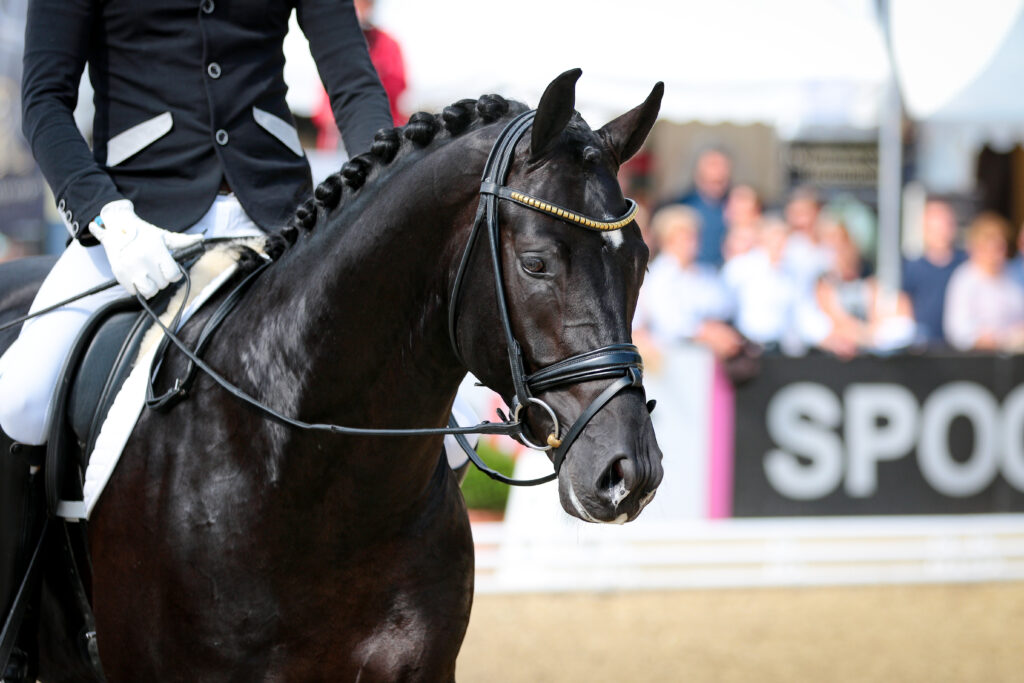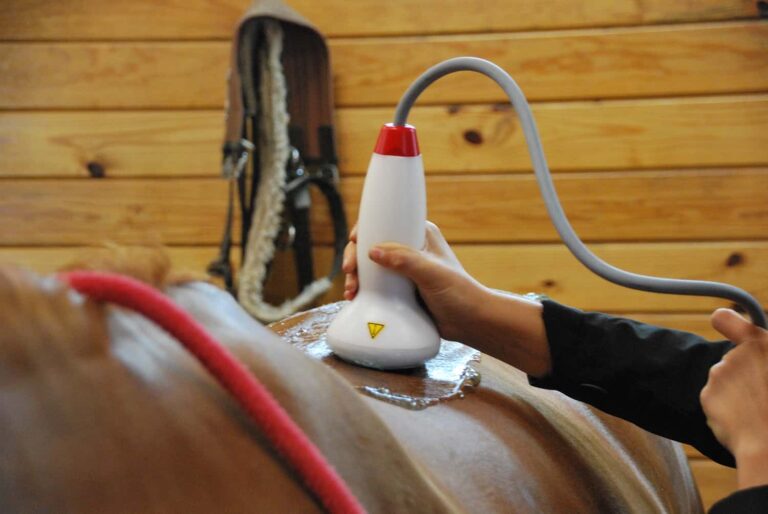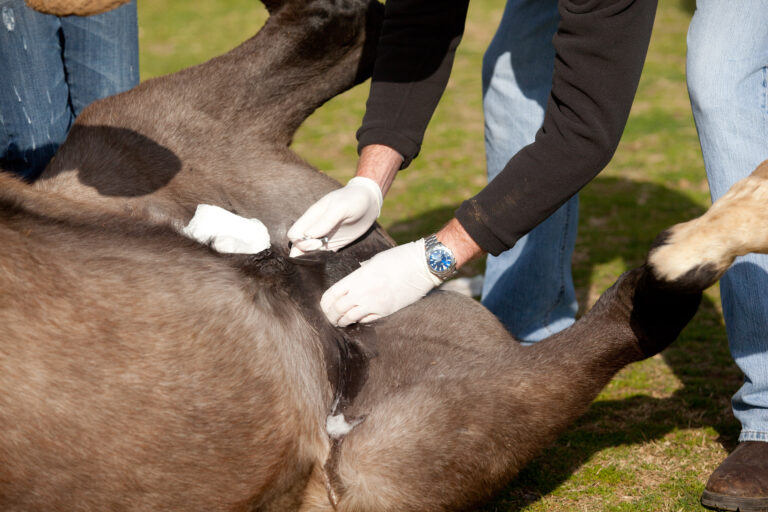This article originally appeared in the Summer 2025 issue of EquiManagement. Sign up here for a FREE subscription to EquiManagement’s quarterly digital or print magazine and any special issues.

As veterinarians, we know how our clients manage and care for their horses because we are intimately involved in much of that care. For each horse, we address not just physical well-being but all the facets that influence his life—nutrition, conditioning, environment, stabling, and social interactions. The public rarely has a chance to witness these favorable events in horses’ lives.
Public scrutiny of horse competition has stepped up considerably, with social media posts periodically casting equestrian sports in a negative light. The public’s perception of equestrian events is often based on single time points from videos and photos of horses being trained or ridden. This perception is magnified by infractions that disregard equine welfare and safety. While such transgressions are not necessarily the norm, they certainly leave a bad impression.
Focusing on the negative is an unfortunate part of social journalism. Equestrian organizations’ efforts to show the positive side of horse care and welfare only partly counterbalance that. For instance, the foundation of the Fédération Equestre Internationale (FEI) Equine Welfare Strategy is the “Good Life” concept focusing on the roughly 23 hours per day a horse is not being ridden or trained. Those hours in a horse’s life that allow them the freedom to move and play, groom, and socialize with other horses are critical to their mental and physical well-being. This is just as important as shelter from inclement weather, provision of adequate quality forage and necessary supplements, and wholesome care offered over a lifetime—one that hopefully includes retirement from work and humane end-of-life decisions.
Despite such laudable efforts, horse abuse continues, sometimes in the well-meaning guise of proffered medical care.
The Veterinarian’s Role
As medical professionals, we must ask ourselves what role we play in aiding horse owners who desire to be the best and most accomplished in their equestrian pursuits, no matter the impact on their horse. The other question worth asking: What should be the veterinarian’s contribution toward a social license to operate (SLO) within equestrian sport? Can we aim for a “Social Contract” of the sort a horse would write, if only they could?
Richard D. Mitchell, DVM, DACVSMR, Cert. ISELP—whose long career includes caring for top-tier horses, both nationally and internationally—has noticed some trends during his more than 50 years in equine practice and as an equestrian competitor. As one example, trainers and riders wanting to impress judges in the hunter divisions implement strategies to minimize a horse’s spark, energy, or tail movement, sometimes with indiscriminate use of dangerous drugs to achieve quiet in their horses. These include magnesium sulfate, ACTH, oxytocin, and even low levels of pentobarbital euthanasia solution. One “relaxing” medication, magnesium sulfate, is not detectable in drug testing because it is an endogenous substance. (Read more about magnesium sulfate at bit.ly/3Dm8D4y.) As for prescription-based medications, where are trainers and owners obtaining them?
Veterinarians are no doubt under pressure to please and appease clients. Sometimes the demands are fairly innocuous; other times they can do considerable harm to the horses and the industry. “Such pressure may cause a veterinarian to perform questionable treatments or give advice on practices that may be considered illegal or unethical,” says Mitchell. Consider a trend toward overuse of joint injections: Trainers and owners often ask for this therapy without an exam and regardless of whether it’s indicated. They might request joint injections because:
- It is on the “schedule” to do so at specific intervals.
- Everyone else is doing it, so they don’t want to give away advantages to competitors who have their horses’ joints injected.
- The horse is not quite performing up to expectations for undefined reasons.
- They want a quick “fix” for a simmering problem.
As veterinarians, we have a complicated animal to evaluate. Performance issues range from true limb discomfort, back or neck pain, gastric ulcers, or respiratory issues, to name a few. In some cases, a rider’s lack of equitation skills interferes with a horse’s optimal performance—this is often overlooked in a veterinarian’s workup but integral to easing a horse’s comfort while performing. In unfortunate cases, a horse simply hates the work and/or intensity he is asked to perform. The Equine Pain Grimace Scale is one of many tools we can use to estimate a horse’s comfort and mental distress while performing its work. Veterinarians are sensitive to equine behavior, postures, and telltale signs of discomfort. Thus, we have an opportunity to speak up and counsel clients. Mitchell says doing so sometimes takes courage.
“Veterinarians should embrace the need to honor the social contract between man and animal when using these horses for equestrian sport and should take this seriously,” he stresses. If nothing changes, he and many others are concerned that equestrian competitions will be limited or eliminated for failure to provide the best welfare for the horses.
Management and Training Concerns
Thanks to advances in diagnostic imaging and orthobiologics, it’s possible to keep horses happy and comfortable for longer. Lameness exams today bear little resemblance to those of even a decade ago. Many tools and a wealth of evidence-based knowledge are now available to equine practitioners, and advances in this field continue. This plethora of knowledge must be used with the horse’s best welfare in mind. But, managing problems depends on an accurate diagnosis, which means owners and trainers must include veterinarians as part of their team to optimize a horse’s care and performance with welfare at the heart of all decisions.
Attention to the details of good equine health practices does not always equate to good welfare. For example, when treating a horse with soundness issues to keep him in work, perhaps continued exercise is not in his best interest. Attention to welfare optimizes animal well-being to maintain and strengthen the social contract between owners and their equine partners. Perhaps the focus on welfare will foster a License to Operate and enhance the continuation of equestrian sports.
Some organizations, such as the United States Equestrian Federation (USEF), have specific medication rules yet allow certain non-steroidal anti-inflammatory drugs (NSAIDs) and certain amounts of dexamethasone (despite banning other corticosteroids) to be used in competition horses. Rules stipulate no medication injections within 12 hours prior to competition. Mitchell suggests these drugs should be used judiciously and not to enable a horse to weather through a problem that might end up worsening with exercise. Some owners, trainers, and veterinarians continue to abuse the rules and administer drugs out of bounds of the regulations. Mitchell asks, “If the horse is sore, find out why. What is the actual problem? Can it be better managed with rest?”
Another meaningful question to ask might be: “Is a horse better suited to a different equestrian career, or should he simply be retired?” These are hard conversations to have with owners and trainers, especially when they’ve put significant financial investment into developing a horse to its current level.
Other concerns center on training. Mitchell notes that if a horse is asked to piaffe in training and does it well once or twice, it is time to stop. He says piaffe and passage potentially cause a deterioration of suspensory branches that threaten a horse’s comfort, welfare, and future athleticism. The same goes for jumping efforts—if a horse is jumping clean in training, consider stopping for that day. Chronic repetitive trauma shortens a horse’s athletic longevity. He stresses that overtraining is a key reason for musculoskeletal and behavioral problems: “Even though a horse is physically capable of performing advanced or arduous tasks, it is not necessarily natural for their bodies to undertake these efforts repeatedly.”
Public perception has stimulated comments from viewers of equestrian sports like, “I can’t watch anymore.” Mitchell notes that although neck hyperflexion in dressage has been deemed unacceptable, for example, some riders still do it without consequences. Because of incidents like this, some animal rights activists are arguing to eliminate equestrian sport from the Olympics altogether. A social contract requires vets and horse owners to listen carefully to these arguments before deciding on their merits.
Moving Forward

So, where does this leave us?
In the sport horse world, the FEI has taken great efforts to level the playing field by making its equestrian events as drug-free as possible and by enforcing the concept of “Fit to Compete.” Drug testing—and rule enforcement—are commonplace strategies to ensure riders follow FEI regulations. The FEI is also focusing on public awareness of equestrian sport. Its recently minted “Equine Ethics and Well-Being: A Good Life for Horses” (tinyurl.com/ytz246xv) recognizes and explains that horses are highly social and emotional beings rather than just a means to an end for a rider. Many owners consider their horses to be family members or partners. The first few pages of the FEI document describe social considerations: “Social license is defined as an intangible, implicit agreement between society and an industry which allows that industry (or community) to pursue its activities on a largely self-regulatory basis because such activities have widespread societal approval.”
For equestrian sports to continue, society must accept and approve of them. FEI-reported surveys from around the world have identified that 48% of public respondents support equestrian sport while 45% could be influenced to see it continue or not. In one survey in the U.K., “20% of respondents do not support horses in sport under any circumstances, and 40% support it only if welfare and safety are improved.” At the 2024 AAEP Convention forum on Social License to Operate, Hallye Griffin, USEF Director of FEI Sport, reported on the public’s response to a simple question: Do you believe horses enjoy being used in sport? Yes: 33%; No: 67%. How can we change this perception?
Other animal industries have fully or partially lost their social license to operate when the public perceived inhumane treatment: The circus; orcas in captivity at theme parks; greyhound racing; fox hunting; and increasing scrutiny of horse racing. Public disquiet has brought animal welfare concerns, including equestrian activities, to the forefront. These issues are not going away.
The objective in this review is for all equine stakeholders to be proactive, rather than react as the public demands change. By getting ahead of a potential problem, the equine industry can show the public as well as industry members the merits of horse sport and build trust, comfort, and acceptance. It is important for riders, owners, trainers, and veterinarians to feel they are doing right by the horses in the context of both ethics and welfare.
Take-Home Message
A social license should spring from a social commitment, a partnership between horse and owner/rider. For owners, trainers, and veterinarians looking to secure a conscionable social license to operate in horse sport, this statement from an FEI document sums it up: “The FEI has not just a direct but also an indirect influence on advancing knowledge and understanding of equine welfare, specifically around the quality of a competition throughout a horse’s life from its breeding, early management, training practices, experience at competitions, right through to the end of its career and life. The FEI vision for sustaining equine participation in sport now and into the future needs to address ethical concerns related to equine involvement in sport. The vision must then be effectively communicated so that all equestrians recognize that they have an individual and collective responsibility for ensuring equine welfare is prioritized.” This vision applies across all equestrian pursuits.
Transparent operation; more protective regulations; consequences for breaking the rules; more conscionable actions by veterinarians in their patients’ care; greater educational and communication efforts for horse owners, trainers, and the general public—these are all strategies to show the public the “good” of equestrian sports. It only works if welfare concerns are front and center, not just in competition but throughout a horse’s life. Without that, equestrian sports are under threat and could lose it all, as we’ve seen with other animal industries. Everyone’s actions must stand up to scrutiny.
One question Griffin proposes—the Central Park Test—might inform our decisions: “Could we train in the middle of Central Park in NYC with current practices and defend our actions?” The USEF rulebook makes a strong point: “The application of proper horsemanship and compassionate training methods are actions that far outweigh and outnumber the isolated instances of abuse in our environment. That said, every single horse deserves our collective protection and not one instance of abuse can be condoned or tolerated.”
Overall, it is salient to follow a time-honored “rule”: If you see something, say something.
As veterinarians, please take this to heart. Use your skills and expertise to examine your patients thoroughly. Brace against client pressure that is not in the best interest of each horse’s welfare. Take the time to engage with and educate equine caretakers about the many evidence-based treatment options that amplify horse welfare. Equine veterinarians, who have a lifetime invested in horse care, are in a position to lead by example.
Related Reading
- Research Spotlight: Preventing Heat Stress in Athletic Horses
- Gene Doping in Horse Sport: Concerns and Perspectives
- Ambient Air Pollution’s Effects on Racehorse Performance
Stay in the know! Sign up for EquiManagement’s FREE weekly newsletters to get the latest equine research, disease alerts, and vet practice updates delivered straight to your inbox.




